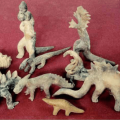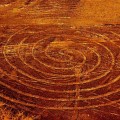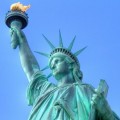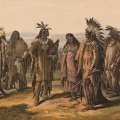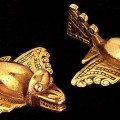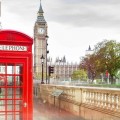In terms of population, Brazil ranks sixth in the world. The nation was formed on the basis of alliances of representatives of the Caucasian, Mongoloid and Negroid races.
Education and culture
The collection of the ancient artifacts of Julsrud from the Mexican state of Guang-Huatlo still causes conflicting opinions of scientists, but the amazing library of tens of thousands of exhibits speaks for itself.
There are many myths and legends about schools in America, which, in many respects, are the product of the Hollywood "dream factory" and news reports. What are the schools in America really like?
The main difference between US schools and European schools is the development of a number of psychological approaches that received general approval in the second half of the 20th century. The most significant of these is the system of creating special conditions for the development of a successful personality.
In South America, 450 kilometers from the Peruvian capital, the city of Lima, the plateau of the Nazca desert is located, which became widely known about eighty years ago.
It is quite a deserted place, dominated by strong winds, which direction depends on the season. Plateau is considered to be one of the most arid places in the world. Rains fall two to three times a year. People have always avoided building dwellings in this area. However, this was true until the forties of the twentieth century.
The Inca Empire is one of the greatest civilizations of the past, with a rich history and culture and a significant influence on the modern world. This Indian state occupied wholly or partly the territory of six countries of modern South America.
For more than a century the Statue of Liberty all around the world is associated with New York and the United States. But what kind of prehistory did it have?
The Statue of Liberty, whose height is 46 meters, was made in Paris, dismantled and delivered in details to the United States, and then installed on Bedlou Island (now Liberty Island), located three kilometers from the southern coast of Manhattan at the mouth of the Hudson River.
Pre-Columbian America experienced the heyday and fall of the great civilizations - the Maya, the Aztecs, the Incas. The territory of modern Central and South America was inhabited by more than 5 thousand tribes. Some of them disappeared, leaving almost no trace. The others were completely destroyed. Most descendants of Indians of that era still live in Mexico, Bolivia, Peru, Ecuador and other countries of South America.
The exposition of the museum, which is located in the building of the state bank of Colombia, you can see the figures made of pure gold. They are very similar to beautiful birds. Their size is only from one to four centimeters. Scientists have discovered them during the scientific and archeological expeditions, during excavations of the burials of the leaders of Indian tribes. Presumably, they were used as decorations in the form of brooches. But there is also a hypothesis that these are ancient amulets.
The Museum of Archeology of Great Britain has received a priceless treasure - part of a small tablet made of wax, where the capital of Britain is mentioned. According to the historians' assumption - the tablet was something like a postal address and belonged to someone from the Romans. The document was dated by scientists from 65 to 85 years AD. This is the oldest written mentioning of London. Earlier it was 117 AD, and the record, where it was written about London, was made by the famous Roman historian Tacitus.
In 1927, the state of Honduras, located in Central America, was under British rule. At this time, the British organized a scientific archeological expedition to the ruins of the ancient city of Maya civilization Lubaantun. The result did not keep itself waiting. Scientists have discovered an incredible, fantastic object - a polished human skull made of fine crystal.


